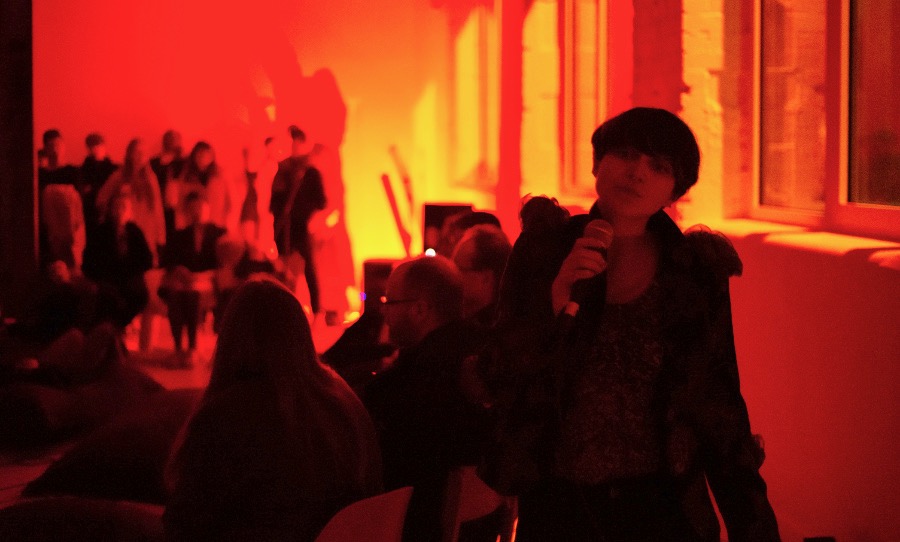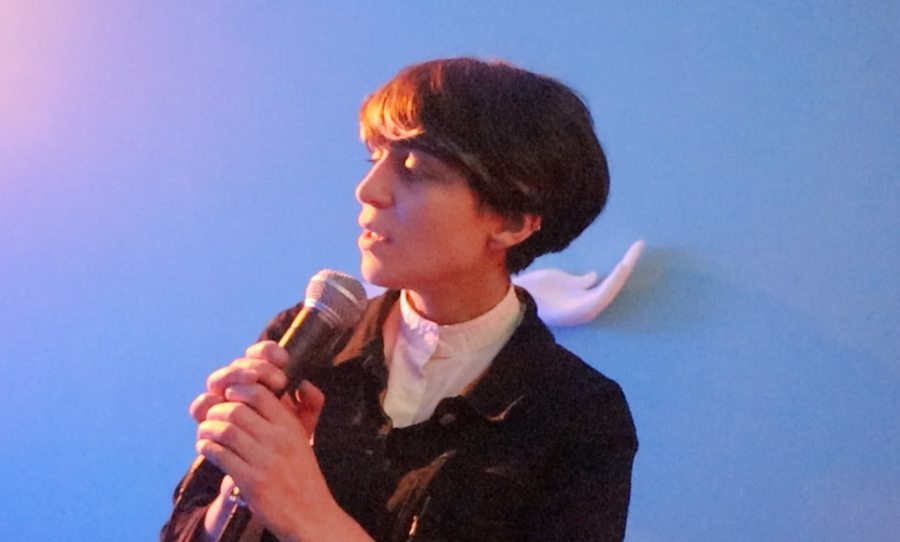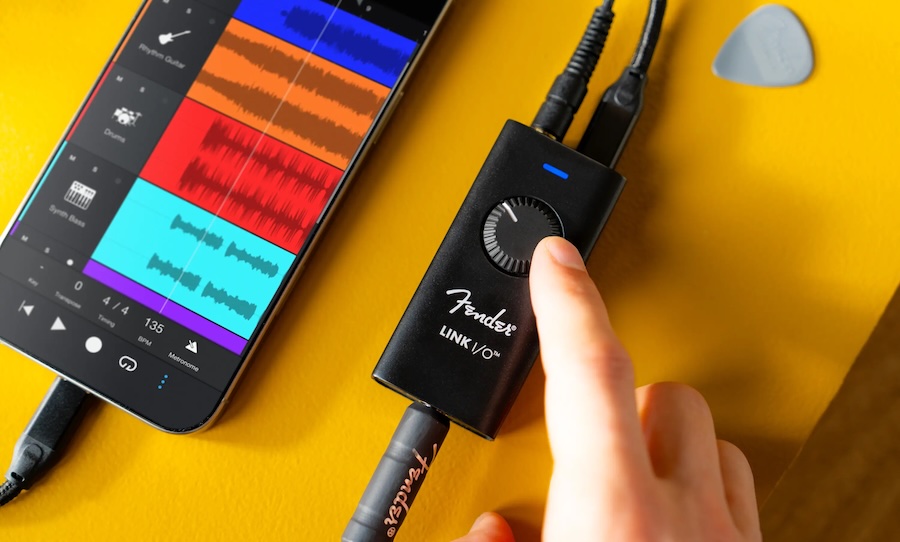Susannah Stark took five to talk about the release of her debut album Time Together (Hues and Intensities), the Second Summer of Love, and how the landscape influences her creative process.
Susannah Stark is a Glasgow-based visual artist who has recently become more interested in adding sound to her exhibitions. Throughout the last few years, she has been composing and recording songs, which also coincided with a spiritual awakening in the artist.
Her debut album Time Together (Hues and Intensities) combines various field recordings and live instrumentation to explore the themes of softness and space. As a result, the album is an otherworldly audio experience that you can almost reach out and touch.

ENMORE AUDIO: You mention that Time Together (Hues and Intensities) is an outcome of including sound in visual art exhibitions. The track Reprise in particular really sets up an ambient, sensory mood. How did your approach change from creating sound for exhibitions to creating an album?
SUSANNAH STARK: There’s the difference in duration of the works, primarily. I think if you’re doing something for an exhibition, there’s a different attention span of the audience, and a different way of coming into the work and being with it. So, for a show, I would have other elements as well, usually visual. And I work with a lot of coloured light filters as well, so there’s usually this multi-sensory element.
Then for the album, it was bringing in stuff that had started in a visual arts context, and to use shorter tracks. I was working with those for a few years actually — since 2015 — kind of editing and re-editing them. It’s been a really slow process, to think about the duration of an album and how that’s going to be different for a listener.
ENMORE AUDIO: So how are the exhibition tracks usually set up? Are they a lot longer?
SUSANNAH STARK: Yeah, they can be, it depends what else is going on in the space. We had one show last year that was all these different rooms in this old house, and the tracks were all quite long because I wanted an atmosphere of all these people in different rooms talking to each other, for very long periods of time.
So, yeah there’s kind of potential with that, to have something that loops. But for some exhibitions I guess (laughs), it can be a bit shorter as well.
ENMORE AUDIO: You went through a spiritual awakening during the process of the album. Is that an idea that’s kind of reflected in the album?
SUSANNAH STARK: Yeah I think so (laughs). I had a few years where I had this chronic illness, where it was like finding ways to get myself through that. And that ended up enhancing the music a lot I think, in how I approached it.
It was just something that motivated me to start exploring that side of life. I started doing quite a bit of meditation and it really helped. It was kind of mutually beneficial for a lot of different things that I was doing.
ENMORE AUDIO: There are a lot of soft sounds on the album, particularly acoustic soft sounds. You were talking about how with the exhibitions are sensory and you can introduce more haptic elements. How did you take that over to recording purely music?
SUSANNAH STARK: Yeah it’s strange. I mean, I’m a visual art person. But I think over time within my art practice there was a movement towards sound and it was something to do with layering. I don’t know, it was like an interest in voice, the human voice and how performative it is.
It’s something where there’s not like a visual element, there’s a different mode of attention or a different mode of listening that comes in. Which I find really interesting in both spaces of art and music because I think there’s a tendency to look at a screen that’s available or whatever the visual thing is.
But when that’s not there, I think it changes the way you move your body or the way your body is in space, engaged in listening. And I was thinking a lot about movement, and with printmaking, like visual art and stuff, it’s quite physical — your body almost becomes part of the machine (laughs).
So, I was kind of thinking: imagine moving the body in a different way, like experiencing music from the point of lying down or listening with other people around you as well. Because I think that’s what I find interesting about music, that people listen and sometimes it can be while you’re doing other things, on the radio, or sometimes it can be when you’re with other people. So, I think it’s something to do with movement and how the body changes in different states of listening.
ENMORE AUDIO: How do you listen to music? Is it kind of a ritual practice, where that’s all you do?
SUSANNAH STARK: Yeah, at the moment especially, I guess because of the lockdown it becomes quite private. But, because I’m really interested in the time at the end of the ‘80s, where you had the Second Summer of Love in the UK. So, there was like a whole scene of some house music, but also drum and bass, and it’s quite hedonistic music and uses a lot of voice samples.
It’s had such an influence on me I think, even though I was a bit too young to actually be going to clubs at that time. But now, I just listen to all those kind of tracks from that period of time, I’ve been doing it a lot over the past couple of years.
It’s something about the rawness of those tracks. I guess they were made to be experienced in a club, but there’s something different about listening to it on your own. It’s very bass-heavy, and I find there’s actually something quite soothing about it really, and I think there’s something going on with that.
There was a time when those kinds of tracks were being produced and obviously that scene was also aided by drugs as well in some way, and I think that influenced the way people were coming together.
And now we’re in another time where we’re kind of like prevented from coming together, but we’ve got this legacy of all this amazing kind of musical and cultural movements. I think people are finding ways to reflect on that, but it’s also transforming into something new. It’s probably a lot more integrated with technology that we’ve all got.
ENMORE AUDIO: And the album has to do a lot with space, like the spaces you feel like you’re in. How did you create the sense of space on the album?
SUSANNAH STARK: Yeah, they’re actually recorded in quite different places, and over quite a long period of time. So, I think Saturn, the first track, was the first one, and so I worked on three of the tracks with someone down in Dorset, in Poole, with a friend of a friend.
That person is really interested in choir. It just felt quite good just working together, thinking about the voice and also the sense of space and the softness that I wanted to convey. Unnatural Wealth was done kind of more in response to time I spent in London, and I worked on it with someone in Glasgow.
That felt much more like a film soundtrack because I guess it was for an exhibition. It was more ‘soundscapey’, so it just became quite epic (laughs), really meandering as well, we went through several versions of it.
Then Reprise and This Is For Us, those were just ones I did at home. So those will have a totally different sense of space in a way because, especially This Is For Us. It was a kind of private, more personal thing.
It came up at the start of the lockdown, I was just writing loads of lyrics and things based on meditation, and then just singing stuff in my room (laughs). So yeah, I think some of them have different spatial qualities to them based on what they were intended for.
ENMORE AUDIO: Does the landscape influence the music at all? The landscape of Glasgow, or wherever you’re situated?
SUSANNAH STARK: Yeah absolutely. Each one responds to a time spent in a particular environment. Unnatural Wealth was really about London, in a way. It’s about being awake in the city, having insomnia (laughs), and a sense of time. Reprise was always something to do with being out in nature, usually in Scotland.
But I’d been doing some research into Christian mystics, and people that were kind of like hermits and lived in some on the Western Isles. They also had this thing where they didn’t sleep and tried to achieve this kind of consciousness that was very calm and focused on their faith. So, they were kind of like oracles as well, people could come to them and visit them.
But I was thinking about how it’s interesting there’s this thing about sleeplessness in that — and then also in the stuff based on city life. It’s to do with your sense of place and time, and sometimes to do with sleep. And how you feel a sense the present — like where you are is sometimes to do with what state your consciousness or your mind is in (laughs).
ENMORE AUDIO: Something I noticed is that there is kind of a lot of out of phase rhythms against a lot of in-phase rhythms. On Remind You it has a really driving pulse with a lot of out of phase stuff on top. Is that a conscious thing?
SUSANNAH STARK: I mean I don’t always quantise everything (laughs) — I never really did — or thought about regularity. But I’ve been thinking a lot about metronomes because I learnt piano growing up and you always have this metronome to help you keep time.
But I wanted to have something that would have this like swing to it, almost like how your body feels when it’s really tired, almost like a palpitation. Something slightly out of time, and it can be disconcerting, but it can be something that breaks the regimentation of the standard kind of beat-based track. It’s got the kind of nuances of voice, and strangeness of the voice in a way, and the percussive elements as well.
ENMORE AUDIO: Is there anything you’re working on during lockdown, or any performances that you’re working towards?
SUSANNAH STARK: I’ve just been working on an exhibition at the moment, and that will be opening on Friday in Edinburgh. So, that’s been quite hectic (laughs), and I’ve got some bits and bobs, like shows next year as well. So hopefully we’ll be able to go do some kind of tour with the music because it’s almost felt more like an art space thing.
It would be quite nice to think a bit more about how it would work live, and I’m also in contact with some musicians here so I’m hoping that we can actually interpret the songs. Maybe include some visual elements as well.
Susannah Stark’s debut album Time Together (Hues and Intensities) is out now via Stroom.



